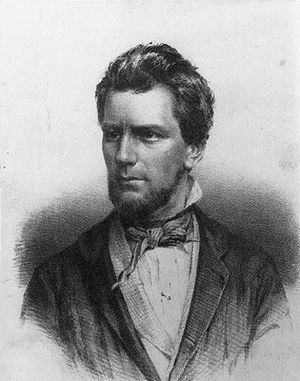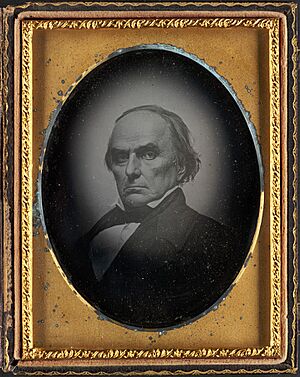John Adams Whipple facts for kids
Quick facts for kids
John Adams Whipple
|
|
|---|---|

From the August 1851 edition of the Photographic Art-Journal
|
|
| Born | September 10, 1822 Grafton, Massachusetts, U.S.
|
| Died | April 10, 1891 (aged 68) Cambridge, Massachusetts, U.S.
|
| Resting place | Worcester, Massachusetts, U.S. |
| Nationality | American |
| Occupation | Photographer, inventor |
| Known for | Photographic pioneer |
| Spouse(s) |
Elizabeth Mann
(m. 1819; died 1891) |
| Parent(s) |
|

John Adams Whipple (September 10, 1822 – April 10, 1891) was an American inventor and an early photographer. He was the first person in the United States to make the special chemicals needed for daguerreotypes. Daguerreotypes were an early type of photograph made on a silver-coated copper plate.
Whipple was a pioneer in taking pictures of space and at night. He won awards for his amazing early photos of the Moon. He was also the first to photograph stars other than our Sun. These included the star Vega and the Mizar-Alcor star system.
Contents
The Life of John Adams Whipple
John Adams Whipple was born in Grafton, Massachusetts. His parents were Jonathan and Melinda Whipple. As a boy, he loved studying chemistry.
When the daguerreotype process came to the United States around 1839-1840, John was the first to make the chemicals needed for it. This work was hard and affected his health. Because of this, he decided to focus on taking photographs instead.
He took his first daguerreotype photo in the winter of 1840. He used simple items like a magnifying glass for a lens and a candle box as a camera. Over time, he became a famous daguerreotype portrait photographer in Boston. Besides taking portraits, Whipple also photographed important buildings in Boston. This included the house where General George Washington lived in 1775 and 1776.
Whipple married Elizabeth Mann on May 12, 1847, in Boston.
Pioneering Photography
Between 1847 and 1852, Whipple worked with astronomer William Cranch Bond. Bond was the director of the Harvard College Observatory. They used Harvard's Great Refractor telescope to take pictures of the Moon. This was the largest telescope in the world at the time. Their Moon photos were so clear and beautiful that they won an award for technical excellence. This was at the big 1851 Crystal Palace Exhibition in London.
On the night of July 16–17, 1850, Whipple and Bond made history. They took the first daguerreotype photo of a star, which was Vega. Later, in 1863, Whipple used electric lights to take night photos of Boston Common.
Whipple's Inventions
John Whipple was not just a great photographer; he was also a busy inventor. He created new types of daguerreotypes, like "crayon daguerreotypes." He also invented "crystallotypes," which were daguerreotypes made on glass.
With his partner, William Breed Jones, he developed a way to make paper prints from glass negatives. This process was also called crystallotype. Whipple received several American patents for his inventions. These included Patent Number 6,056 for the "Crayon Daguerreotype" and Patent Number 7,458 for the "Crystallotype."
Whipple passed away suddenly from pneumonia on April 10, 1891, in Cambridge, Massachusetts. He was buried in Westborough, Massachusetts.
Image gallery
-
General Ulysses S. Grant (seated at center) and staff: Ely S. Parker, Adam Badeau, Orville E. Babcock, Horace Porter
-
Nathaniel Hawthorne, c. 1850–1855
Where to See His Work
You can find John Adams Whipple's amazing photographs in many collections, including:









